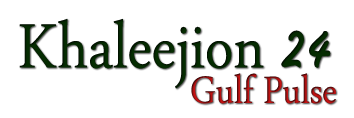Standard tests to measure students’ performance from “kindergarten” to “secondary”

Students of public and private schools, which apply the curriculum of the Ministry of Education, are subject to standard and international standard tests, targeting various stages of education from kindergarten to secondary school, which provides an accurate and renewable database, which reflects the level of performance of the educational system, and allows the development of policies and curricula according to best global practices.
This comprehensive system is an essential strategic tool that contributes to improving the quality of education, enhancing the state’s competitiveness in global educational indicators, and achieving its ambitious vision in building a global leading educational system.
The tests focus on measuring academic students’ performance levels accurately, identifying strengths and improvement opportunities, supporting educational decision makers in developing evidence -based educational policies, curricula design and treatment intervention plans, which contributes to the continuous improvement of the learning process.
According to the student evaluation policy for the current academic year 2025-2026, which was seen by «Emirates Today», the national system begins with a basic evaluation test of the Arabic language (ABA), which is applied to first-grade students in government and private schools applied to the Ministry’s curriculum, during the first eight weeks of the beginning of the school year.
The Ministry of Education stated, through the evaluation policy, that this evaluation focuses on measuring the possession of children, the basic Arabic language skills that enable them to learn the language and use it to communicate with others.
The evaluation includes a set of tools, including students testing in Arabic language skills, teachers’ observations, and electronic arrangements directed to parents, and some artificial intelligence applications are employed in collecting and analyzing data, and students degrees are distributed in it on a unified scale, which allows accurate comparisons at the level of schools in various educational areas.
It also contributes to determining the level of progress in reading and writing skills in the early classes, and the design of the evaluation is based on learning outcomes for reading and writing skills prescribed in early childhood curricula and theories of the first language acquisition, which provides the Ministry as a scientific indication to follow up the level of students’ progress and develop their linguistic support programs since the first academic years.
According to the evaluation policy, national tests include standard efficiency test (SPA), which is widely applied according to the frameworks of the Ministry’s curricula, and measures the skills of Arabic and English and mathematics among students from the fourth to 11 in government schools.
It works to provide accurate data that helps in determining students ’levels in detail, and providing school and regional reports that contribute to directing curriculum design and school support operations, which enhances the quality of education and contributes to improving students learning. The standard efficiency test also allows the monitoring of educational gaps, the design of treatment plans and programs based on data and scientific evidence, to ensure the improvement of learning outcomes, and the scores of students are distributed on a unified scale that enables comparing the results among students at the level of schools, in order to achieve justice, and provides a comprehensive database for educational decision makers.
On the international level, Emirates students regularly participate in four major standard international tests, aiming to compare their performance with the performance of their peers in various countries of the world, and to determine the aspects of strength and improvement opportunities.
These tests include “Pisa”, which measures the capabilities of students at the age of 15 years in the fields of reading, mathematics and science, in addition to measuring creative thinking and global efficiency according to the evaluation course, and aims to provide international comparison data about the quality of education outcomes.
The “TIMSS” test measures mathematics and science skills among students of the fourth and eighth grades, monitors their academic achievement level periodically, and helps in directing educational policies, to improve mathematics and science education.
As for the “PIRLS” test, it measures the reading skills of reading among the fourth grade students, and aims to follow the level of students’ progress in reading skills over the years.
Finally, the “IELS” test that applies to children five years old, and measures four main areas: emerging reading skills, emerging mathematics, self -regulation, social and emotional growth in a way that includes sympathy and trust.
- For more: Follow Khaleejion 24 Arabic, Khaleejion 24 English, Khaleejion 24 Live, and for social media follow us on Facebook and Twitter





